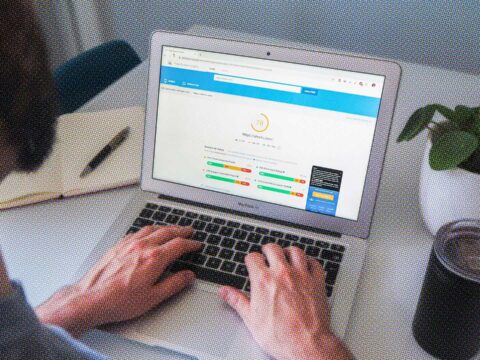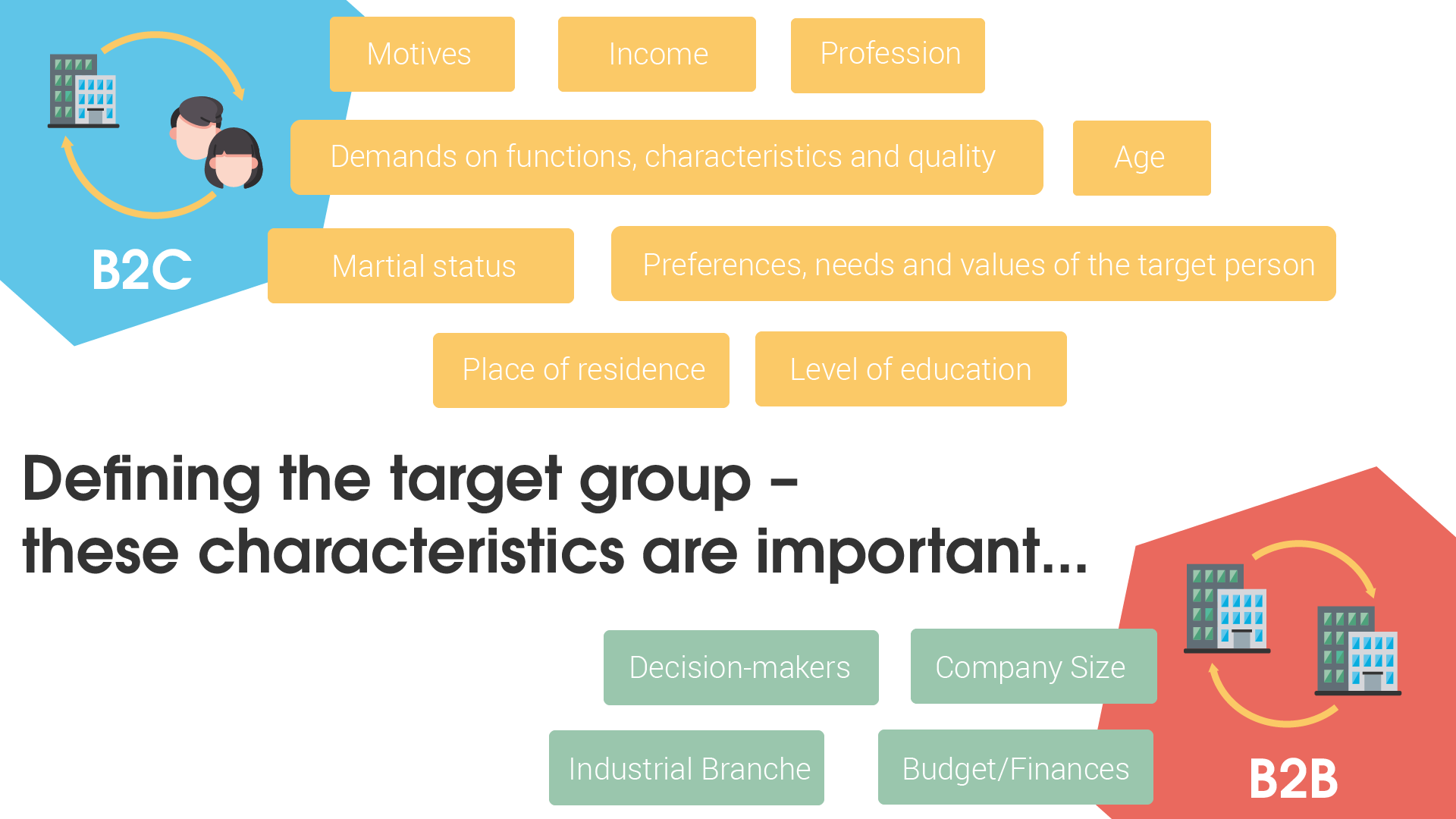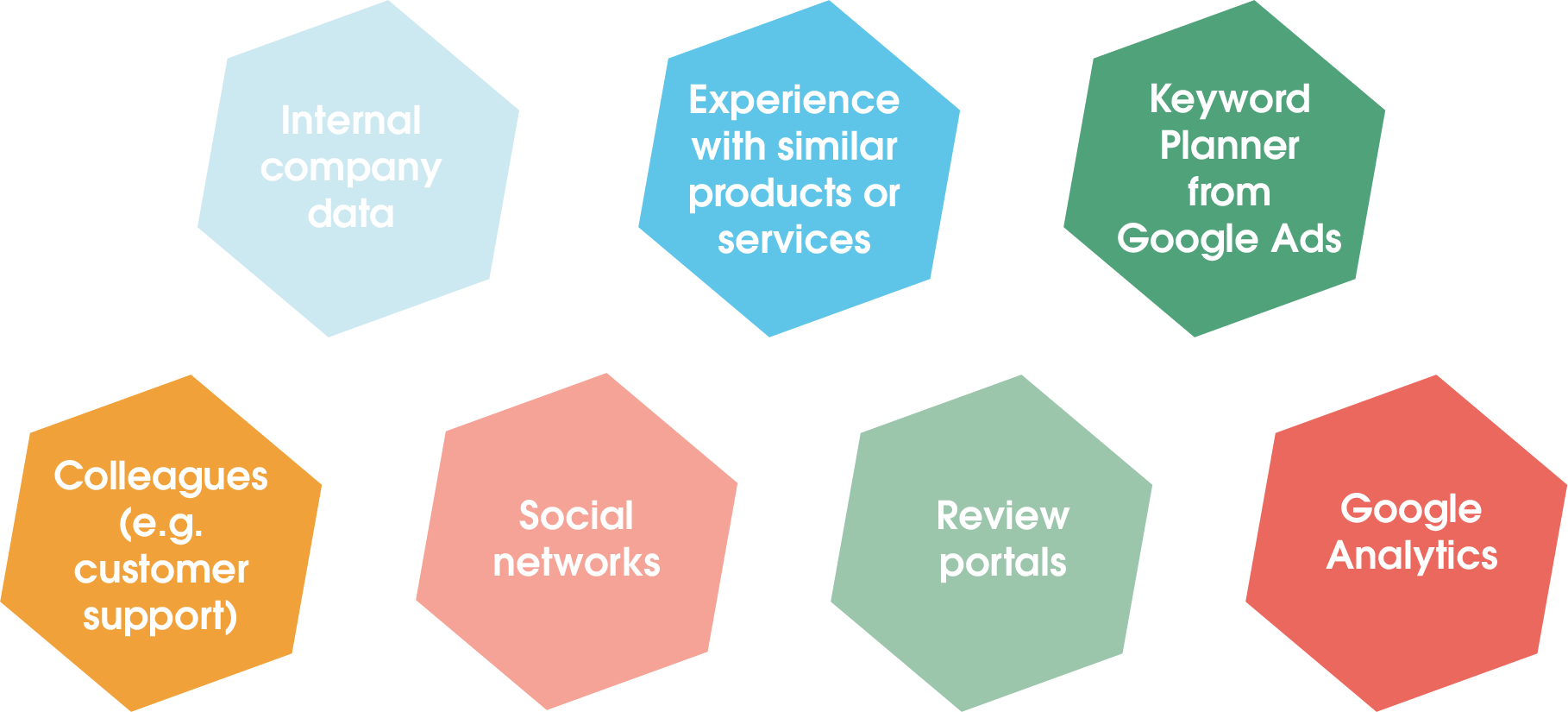
Google PageSpeed Insights (PSI) is a free tool from Google that analyses and evaluates the performance of your website. Find out here which metrics are available and how you can optimize your website performance. ... Continue reading
| 06 min |


| 14 min |
Basic knowledge: What is a target group?
What is a target group analysis?
Why is a target group analysis so important?
Step by step – This is how target group analysis is done
What methods are there for analyzing the target group?
How to use Google Analytics for your target group analysis
A target group always forms the basis of all marketing activities. It is a group of people or companies that are characterized by having similar desires and preferences. They act according to a certain pattern or exhibit similar needs. In addition, they often match in sociodemographic characteristics over, these are, for example, age, relationship status as well as marital status, education or income.
The target audience, which are thus people or companies that you want to address to offer them your product or service portfolio.
A target group analysis is an effective method to define a target group. It is considered an important tool in market research and is particularly relevant in product development. In addition, measures of communication can be adapted and specifically targeted according to the target group analyses.
A target group analysis pursues thereby as a clear goal, the potential customers and/or the own target group, to become better acquainted. This helps you again to regard their needs and interests more detailed. So you succeed even better to address the goals and desires of the target group.
Your marketing measures can only be successful and targeted if you know your target group. Only then can you respond to their needs. Customized and perfectly targeted campaigns and content are the first step in this direction. This is how you generate trust and added value, which has an impact on user experience and customer satisfaction. This, in turn, pays lasting dividends to the success of your business.
A target group analysis pursues two clearly defined goals:
In order to retain existing customers, you can carry out various measures:
There are also various ways to acquire new customers:
You can divide a target group analysis into four steps:

Finding the right target audience is essential to your success. Therefore, the first important step of a target group analysis is to collect information to define your target group exactly. Only if you know how they act and think, you can tailor your campaigns to fit them exactly.
For this, you use individual characteristics that can be segmented into different categories. Demographic characteristics are the foundation or basic data of an individual person. Socioeconomic characteristics deal with the circumstances of the target group. Psychographic characteristics reveal what influences the potential customer to buy from you. The latter is often much more subjective than demographic characteristics. In addition, behavior is important, as it determines how your customer ultimately acts.
DEMOGRAPHIC FEATURES | SOZIOECONOMIC FEATURES | PSYCHOGRAPHIC FEATURES | BEHAVIOR |
|---|---|---|---|
Age | Education level | Motivation | Price sensitivity |
Gender | Occupation | Oppinions | Customer satisfaction |
Family status | Income | Desires | Purchase range |
Residence | Values | Preferred Devices | |
Lifestyle |
Table 1: Example of possible characteristics of a target group analysis
The following guiding questions can therefore be used, for example, to define your B2C target group:
In B2B, on the other hand, questions about company size, decision-makers, budgets or finances and industry are relevant. It is important to know that every industry ticks differently. Therefore, B2B target groups can also look very different.

It’s important to know how to get data in the first place that you can use in your audience analysis. The following sources will help you with this:

You can also learn more about this in the “What are the methods for analyzing target audiences?”.
To find out how your target group responds to products or services, it is important to know the buying behavior. For this purpose, there are very individual characteristics by which the consumption habits differ within a target group. The following guiding questions will help you to gain insights into the buying behavior of potential customers. This will give you a better impression.

To answer these questions, you can, for example, draw on statistics, public surveys, or your own empirical values and collected data. Also, Google Trends is a good way to generate insights and assess a trend development.
Certain character traits of the target person may have an impact on buying behavior. The individuality and versatility of individuals is not initially considered in a target group. If you want to go into such details, a segmentation of your target group makes sense. This enables you to divide them into further “sub-target groups” and to target marketing measures and campaigns even more precisely. But that follows after your basic target group analysis.
So far, you have already diligently collected data and are as good as done with your target group analysis. Before you use those data and results for marketing purposes, you should check them again. In this phase, for example, it is a good idea to start a market research. It does not have to be complex. It is simply a matter of determining whether your results are correct and work in practice before you implement specific marketing measures.
Now you are almost at the end of your target group analysis. Through surveys, interviews, your own experiences, etc., you have already defined your target group pretty well. However, the final goal of your analysis should be to create a user profile that helps you better understand the desires, goals and needs of your target group. In addition, these personas make it easier for you to put yourself in the user’s shoes.
User profiles thus portray specific target group representatives. Their detailed and meaningful description turns a fictitious and rather abstract target group into a person with name, age, gender, etc. This makes them more tangible.

Always keep your user profiles up to date. If you get new insights through further methods, these should also be incorporated. This way you are always prepared and can react faster to changes.
Classic measures for conducting a target group analysis are: Surveys, interviews, online research or the use of internal company data as well as recessions or support requests.
Surveys are always a chance to find out more about your customers. They also give you the opportunity to gather a lot of information with relatively little effort. The option to participate anonymously in the survey also increases your chances of attracting more participants. Surveys can be conducted both in writing (e.g. by mail) and online.
Ask your questions clearly and not too complicated. The participants should understand them exactly and be able to answer them easily. Otherwise, you run the risk that the participants will abandon the survey, and you will not receive any data.
Interviews are much more time-consuming than surveys, but your participation rate is usually higher and the results are of higher quality. Even if an interview cannot be anonymized or can only be anonymized with difficulty, you have a clear advantage: You can question the interviewee much more intensively and respond precisely to his or her answers.
With the help of reviews, you can learn a lot about the wishes and needs of your target group. It doesn’t matter if they are about your products or those of your competitors. You can use these insights to grow and minimize problems in the future. Support requests can also be helpful to better align your own product or service portfolio with the target group.
The most cost-effective way is to search the Internet for information about your target group. However, it is important to note that not everything you find on the Internet is correct. Sometimes data is therefore not reliable. Therefore, only obtain information from trustworthy sources, such as Statista or the Federal Statistical Office of your home country. In addition, this kind of research can be more time-consuming than you think. Tools such as Google Trends can help you gain further insight into your target group. It’s also helpful to scour social media for information to feed your target group analysis with more data.
In this context, it also makes sense to access your own data. However, here you only have access to information of already existing customers. This makes it more difficult for you to develop new customer groups. Nevertheless, it is very helpful if you use already existing data and also let it feed into the target group analysis.
With the help of Google Analytics you can also define and create target groups. To do this, log in to your Analytics account, click on Administration and then open the property for which the target group is to be defined. Via Target group > Target groups you can add them via “+ New target group”. By default, the data Analytics uses for this target group comes from the current report data view. If you want to change the data view, click “Edit” and then “Next step”. There you can choose from preconfigured target groups. These include:
Once you have chosen one of these preconfigured target groups, the second step is to set the target group goals – this works via the button “+ Add goals”. With a click on “OK” and “Publish” you’ve done it. Your audience is created in Analytics.
Google also gives a detailed guide for this, where you can read about how to edit, close, delete, or reopen audiences.
Want to know how to use your target group analysis for paid advertising?


